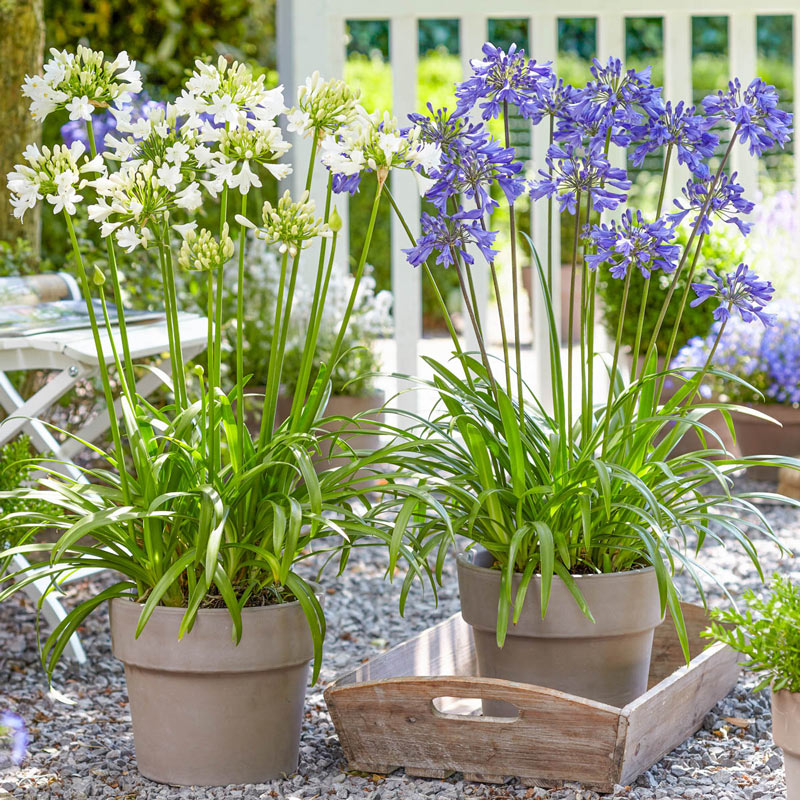Usual Agapanthus Troubles and Exactly How to Fix Them
Usual Agapanthus Troubles and Exactly How to Fix Them
Blog Article
Mastering the Art of Agapanthus Treatment: Essential Actions for Healthy Development and Vibrant Blossoms
In the world of gardening, the growing of agapanthus stands as a rewarding endeavor for those that look for to nurture these stylish flowering plants. With their striking flowers and graceful vegetation, agapanthus has actually captured the interest of garden enthusiasts worldwide. Nevertheless, accomplishing optimal growth and dynamic blossoms calls for a nuanced technique that incorporates different vital steps. From picking the right range to understanding trimming methods, the trip in the direction of growing flourishing agapanthus plants is diverse and holds the essential to opening the full possibility of these botanical treasures.

Picking the Right Agapanthus Variety

When selecting the appropriate Agapanthus selection for your garden, take into consideration elements such as environment suitability, bloom shade, and development practice. Agapanthus, typically called Lily of the Nile or African lily, is available in a range of shades varying from tones of purple and blue to white. Select a flower color that complements your existing garden combination to develop an unified landscape. Additionally, take into consideration the climate in your area to ensure the Agapanthus variety you choose can grow in your details problems. Some varieties are a lot more tolerant of chilly temperatures, while others prefer warmer climates. Recognizing the growth behavior of various Agapanthus selections is vital for correct positioning within your yard. Some varieties have a clumping growth behavior, ideal for borders or containers, while others have an even more spreading nature, suitable for ground cover or mass growings. By carefully assessing these aspects, you can choose the ideal Agapanthus selection to enhance the elegance of your garden.
Ideal Growing Problems
Thinking about the ideal environmental demands is essential for successful Agapanthus growing. Agapanthus flourishes in well-draining dirt with a somewhat acidic to neutral pH level. When growing, select an area that gets complete sunlight to partial shade. In hotter climates, offering some mid-day shade can avoid scorching of the fallen leaves. Agapanthus plants are sensitive to cold temperature levels and must be safeguarded from frost during winter season.
To guarantee healthy and balanced development and dynamic blossoms, plant Agapanthus bulbs at a deepness of about 2-4 inches and room them 8-12 inches apart. Mulching around the base of the plants helps preserve dampness and suppresses weed growth.
Watering and Fertilizing Tips
Keeping proper dampness levels and supplying vital nutrients are crucial elements in the care routine for Agapanthus plants. When it pertains to sprinkling Agapanthus, it is crucial to strike an equilibrium. If overwatered, these plants choose continually damp soil yet are prone to root rot. Throughout the growing period, water deeply as soon as a week, making sure the soil is well-draining to stop waterlogging. In hotter environments or throughout durations of dry spell, even more constant watering may be required to keep the dirt equally damp. However, reduce watering in the wintertime to protect against water logged conditions.
Fertilizing Agapanthus is crucial for advertising healthy growth and prolific blossoms. Apply a balanced plant food, such as a 10-10-10 formula, in the early springtime as new development arises. By complying with these watering and feeding ideas, you can ensure your Agapanthus plants prosper and generate lively, durable blossoms.
Trimming Methods for Agapanthus
Pruning Agapanthus plants at the suitable times and with correct methods is crucial for maintaining their health and wellness and promoting optimum development and blooming. The optimal time to prune Agapanthus is in click for more late winter or early spring prior to new growth emerges. Start by eliminating any yellowing or dead fallen leaves near the base of the plant. Cut them as short as possible without harming the emerging shoots.
Deadheading spent blossoms can also reroute the plant's energy into producing even more flowers instead than establishing seeds. If you desire to accumulate seeds for propagation, leave some flowers to check this fully grown and completely dry on the plant.
Keep in mind to make use of tidy, sharp tools to make accurate cuts and lower the threat of presenting conditions. Agapanthus. Normal trimming will assist maintain your Agapanthus looking healthy and balanced and cool while ensuring an abundant display of beautiful blossoms
Handling Common Insects and Diseases
After guaranteeing proper trimming methods for Agapanthus, it is necessary to resolve typical insects and illness that can influence the wellness and vigor of these plants. One usual pest that affects Agapanthus is the Agapanthus gall midget.
Additionally, Agapanthus plants can endure from root rot if they are grown in badly draining pipes dirt. By being watchful and taking prompt activity against illness and insects, you can aid your Agapanthus plants grow and produce vivid flowers. Agapanthus.

Conclusion
Finally, understanding the art of agapanthus treatment includes choosing the best range, supplying suitable growing problems, correct watering and fertilizing, ideal trimming strategies, and dealing with common bugs and illness. By complying with these crucial actions, you can make certain healthy growth and lively flowers for your agapanthus plants. Remember to consistently monitor and maintain your plants to Get More Information advertise their general well-being and durability.
To make certain healthy development and vivid flowers, plant Agapanthus light bulbs at a depth of about 2-4 inches and room them 8-12 inches apart. By adhering to these watering and fertilizing suggestions, you can guarantee your Agapanthus plants prosper and create vivid, long-lasting flowers.
One typical parasite that influences Agapanthus is the Agapanthus gall midget. Additionally, Agapanthus plants can endure from origin rot if they are grown in inadequately draining pipes soil. By complying with these important actions, you can make certain healthy and balanced growth and vivid blooms for your agapanthus plants.
Report this page